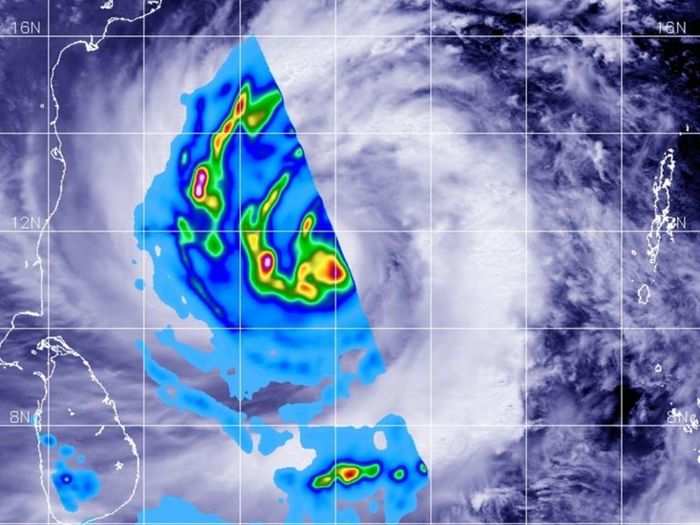
NASA

Global Precipitation Measurement (GPM) core satellite passed over the Northern Indian Ocean on May 17 at around 1:00 pm. The weather data has been overland on cloud imagery from Japan’s Himawari-8 satellite.
GMP was able to observe rainfall rates occurring on the western side of the newly formed and very large tropical Cyclone Amphan. The heaviest rainfall has been highlighted in pink. However, most of the rainfall was noted to be around 25mm per hour shown in yellow areas.

NASA-NOAA’s Suomi NPP satellite shows the visible image of Cyclone Amphan on May 18, just off the eastern coast of India. You can see vast storm over the open ocean, stretching from Sri Lanka, past the Indian states of Tamil Nadu to Andhra Pradesh.

The photo was taken using Moderate Resolution Imaging Spectroradiometer (MODIS) on NASA’s Terra satellite, overlaid on Black Marble nighttime satellite imagery. At the time, Cyclone Amphan was recording speeds of around 185 kilometres per hour, making it a category 3 storm on the Saffir-Simpson wind scale.

The image was captured using the Moderate Resolution Imaging Spectroradiometer (MODIS) on NASA’s Aqua satellite on May 20 at around 1:00 pm. At the time, Cyclone Amphan was recording speeds of around 165 kilometres per hour — putting it at category 2 on the Saffir-Simpson wind scale.
 Saudi Arabia wants China to help fund its struggling $500 billion Neom megaproject. Investors may not be too excited.
Saudi Arabia wants China to help fund its struggling $500 billion Neom megaproject. Investors may not be too excited. I spent $2,000 for 7 nights in a 179-square-foot room on one of the world's largest cruise ships. Take a look inside my cabin.
I spent $2,000 for 7 nights in a 179-square-foot room on one of the world's largest cruise ships. Take a look inside my cabin. One of the world's only 5-star airlines seems to be considering asking business-class passengers to bring their own cutlery
One of the world's only 5-star airlines seems to be considering asking business-class passengers to bring their own cutlery Experts warn of rising temperatures in Bengaluru as Phase 2 of Lok Sabha elections draws near
Experts warn of rising temperatures in Bengaluru as Phase 2 of Lok Sabha elections draws near
 Axis Bank posts net profit of ₹7,129 cr in March quarter
Axis Bank posts net profit of ₹7,129 cr in March quarter
 7 Best tourist places to visit in Rishikesh in 2024
7 Best tourist places to visit in Rishikesh in 2024

Copyright © 2024. Times Internet Limited. All rights reserved.For reprint rights. Times Syndication Service.